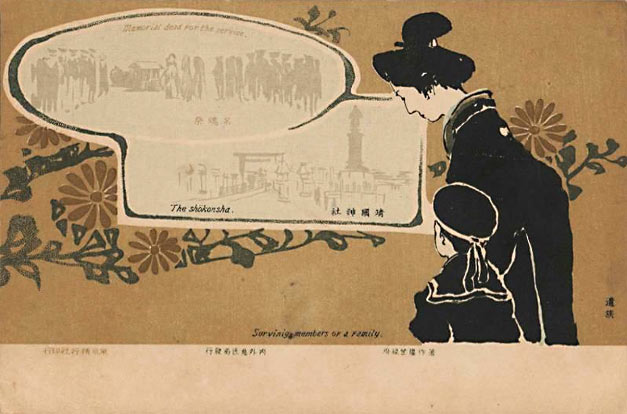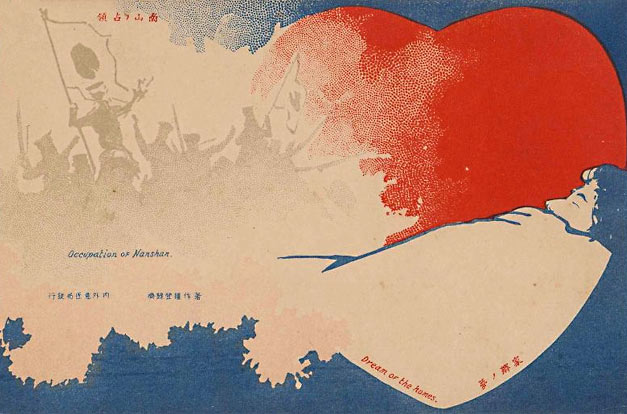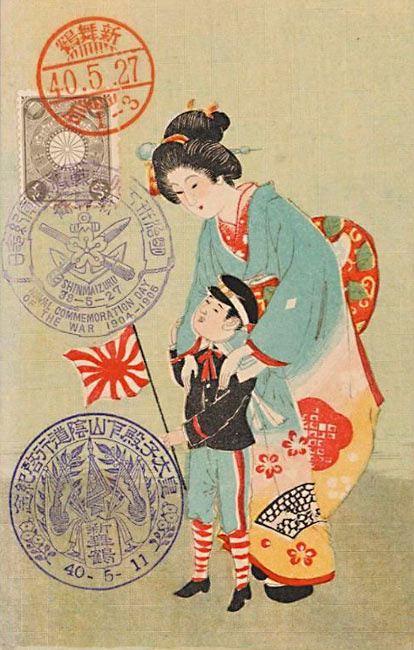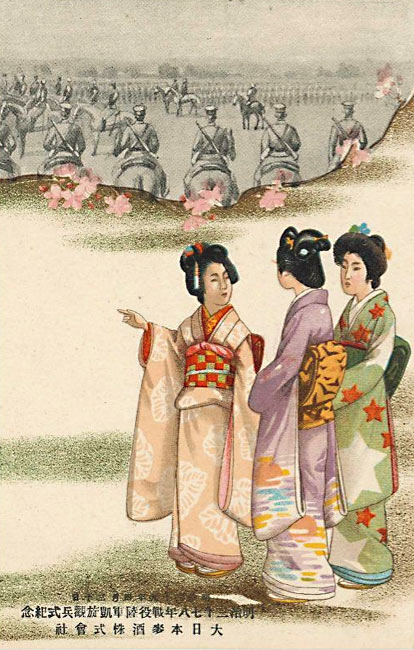The Homefront: Women & Children
Another of the innovative and sometimes surprising features of Japanese Russo-Japanese War postcards was the inordinate attention given to scenes on the homefront—far from the clash of armies and navies overseas.
Here, the propaganda message of the new medium worked in several directions. People on the homefront were mobilized to see themselves as a national entity united in support of the forces abroad. At the same time, fighting men abroad could be encouraged by receiving such morale-boosting images of loved ones at home in the mail. Such graphic mass communication was new on the world scene—not just the Japanese scene—and it had no real counterpart in the mass-media graphics of the Russian foe.
“Occupation of Nanshan and Dream of the Homes”
[2002.3371]
“Mother and Child Giving a Soldier a Send-Off”
[2002.3182]
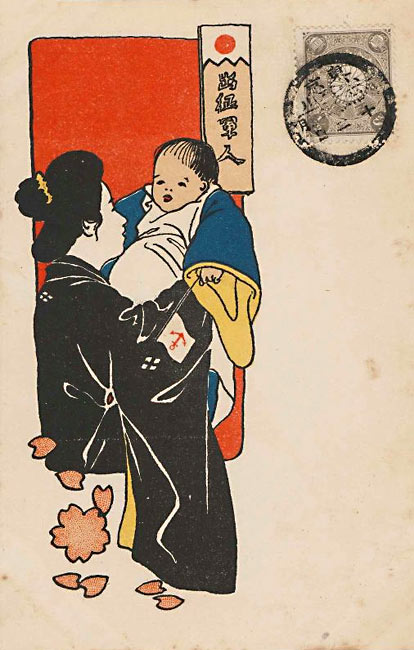
“Surviving Members of a Family”
[2002.3371]
“Returning Home” (from an unidentified series)
[2002.5180]
“Mother and Child Holding the Japanese Flag”
[2002.3515]
“Commemoration of the Ceremony of the Army's Triumphant Return”
[2002.5130]
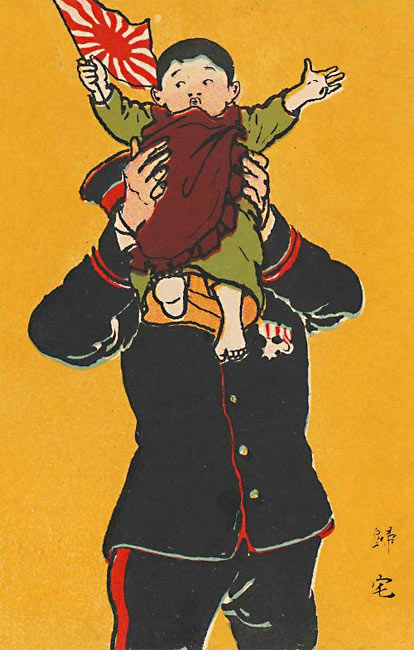
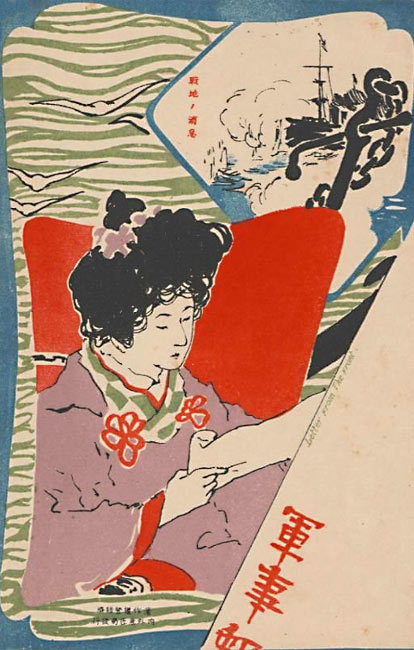
“Letter from the Front”
[2002.6865]
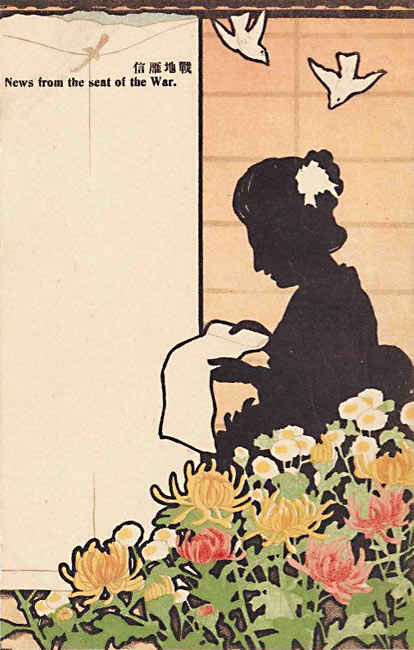
“News from the Seat of the War”
[2002.5125]
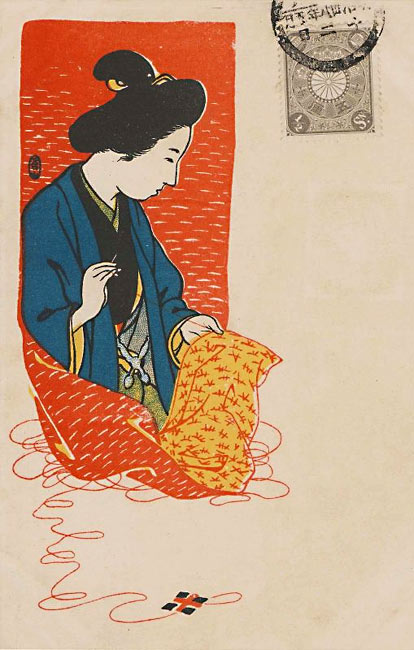
“Woman Sewing for a Soldier”
[2002.3181]
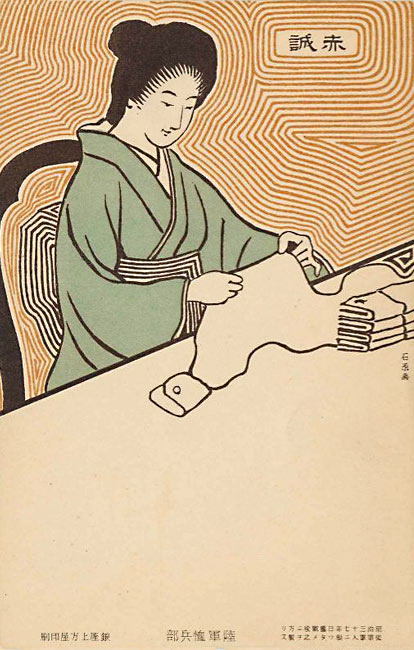
“With Whole Heart (Sekisei)”
[2002.5244]
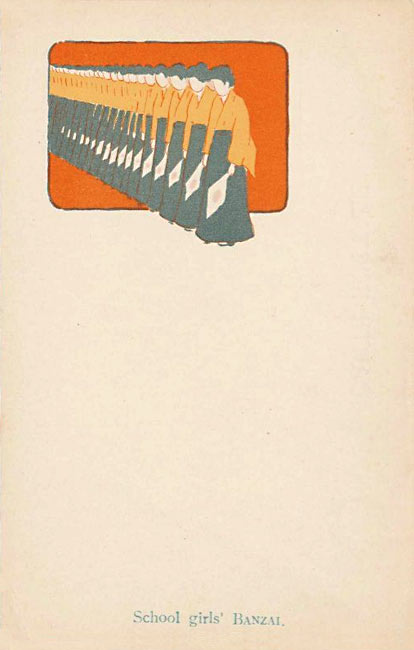
“School Girls' Banzai” (from an unidentified series)
[2002.5133]
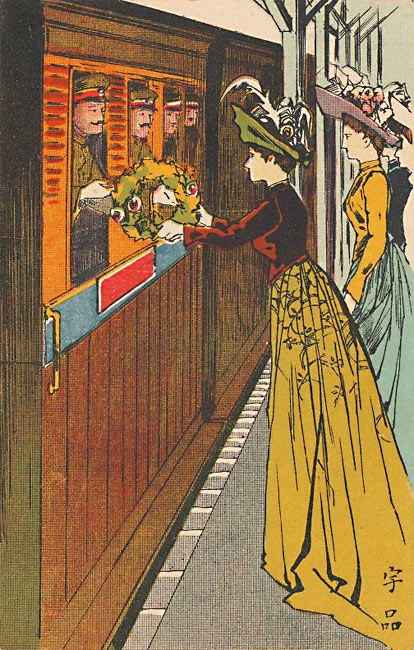
“Ujima” (from an unidentified series)
[2002.5179]
